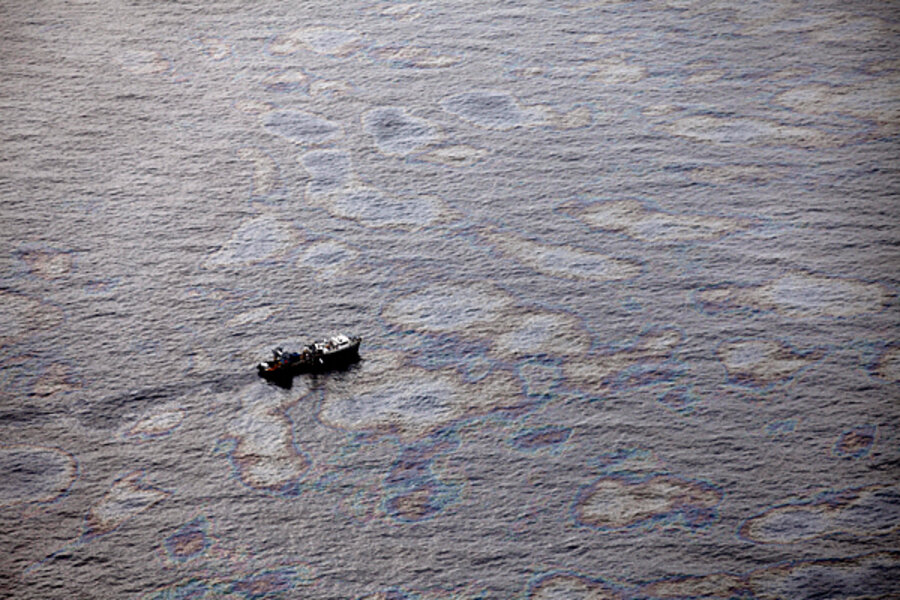BP oil spill could spread to Atlantic Ocean
Loading...
The huge oil slick that has spread across the Gulf of Mexico could soon extend its reach, traveling around the tip of Florida and entering Atlantic waters, a computer model suggests.
"I've had a lot of people ask me, 'Will the oil reach Florida?'" said one of the scientists who worked on the model, Synte Peacock of the National Center for Atmospheric Research (NCAR). "Actually, our best knowledge says the scope of this environmental disaster is likely to reach far beyond Florida, with impacts that have yet to be understood."
The oil slick caused by the explosion and subsequent sinking of the Deepwater Horizon oil rig on April 20 has grown since the first days of the disaster, though the oil has largely stayed confined to a relatively stagnant area of the Gulf near the Louisiana and Alabama coastlines. But that could change as the oil slowly drifts towards faster-moving currents in the Gulf.
IN PICTURES: The Gulf oil spill's impact on nature
The computer simulations indicate that, once the oil in the uppermost ocean has become entrained in the Gulf of Mexico's fast-moving Loop Current, it is likely to reach Florida's Atlantic coast within weeks. It can then move north as far as about Cape Hatteras, North Carolina, with the Gulf Stream, before turning east.
Whether the oil that reaches the Atlantic will be a thin film on the surface or mostly subsurface due to mixing in the uppermost region of the ocean is not known.
The scientists used a powerful computer model to simulate how a liquid released at the spill site would disperse and circulate, producing results that are not dependent on the total amount of oil released.
"The modeling study is analogous to taking a dye and releasing it into water, then watching its pathway," Peacock said.
The dye tracer used in the model has no actual physical resemblance to true oil. Unlike oil, the dye has the same density as the surrounding water, does not coagulate or form slicks, and is not subject to chemical breakdown by bacteria or other forces.
Peacock and her colleagues stress that the simulations are not a forecast because it is impossible to accurately predict the precise location of the oil weeks or months from now. Instead, the simulations show possible scenarios that could govern the movement of the oil in the coming weeks.
The timing and course of the oil slick will be affected by regional weather conditions and the ever-changing state of the Gulf's Loop Current — neither of which can be predicted more than a few days in advance.
The dilution of the oil relative to the source will also be impacted by details such as bacterial degradation, which are not included in the simulations.
The results of the model study were reviewed by scientists at NCAR and elsewhere, although not yet submitted for peer-review publication.
Additional model studies are currently under way, looking further out in time, that will indicate what might happen to the oil in the Atlantic.
"We have been asked if and when remnants of the spill could reach the European coastlines," said Martin Visbeck, a member of the research team from IFM-GEOMAR in Kiel, Germany. "Our assumption is that the enormous lateral mixing in the ocean together with the biological disintegration of the oil should reduce the pollution to levels below harmful concentrations. But we would like to have this backed up by numbers from some of the best ocean models."





